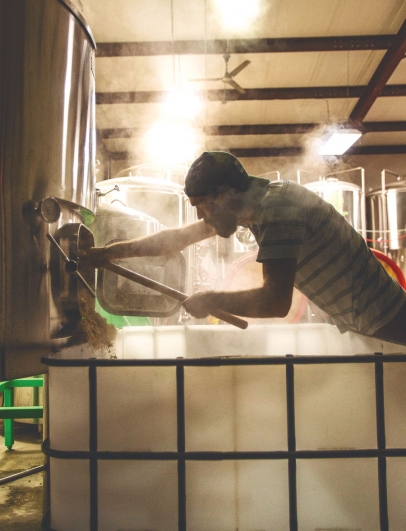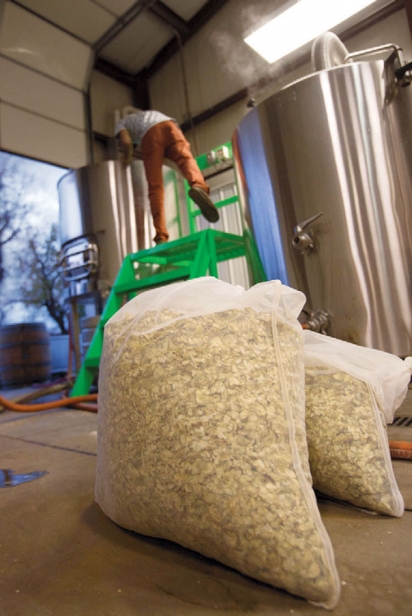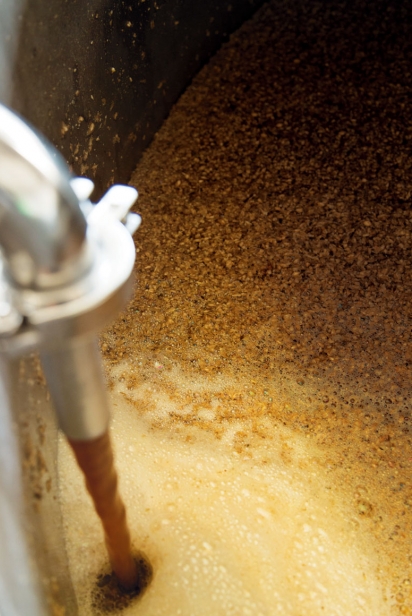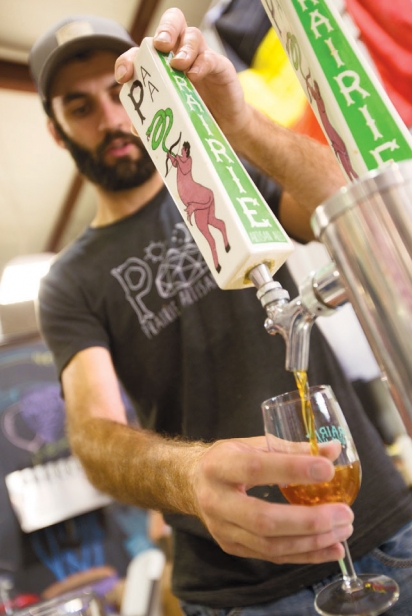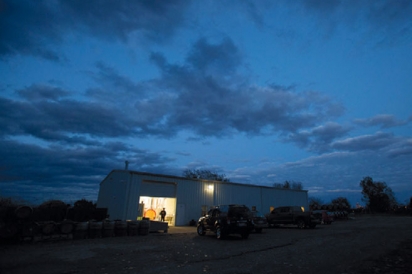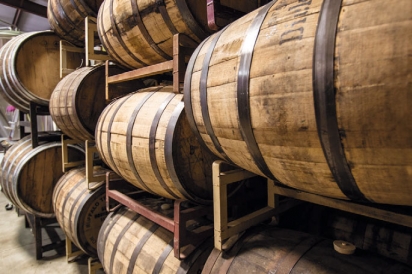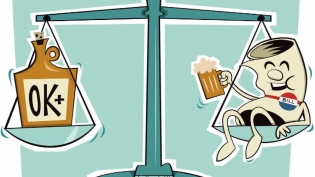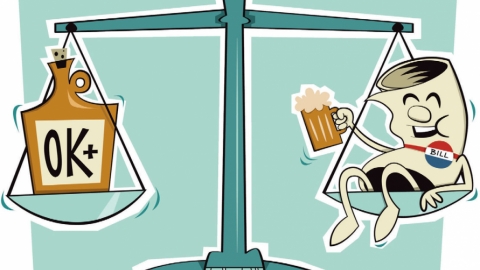Brewing with a Sense of Place
[Editor’s note: A Tulsan and former brewer at Prairie Artisan Ales, Jake Miller now works as head brewer at Wolves and People Farmhouse Brewery in Newberg, Oregon.]
It’s been six months since I moved to Oregon. The rain is relentless. I didn’t see the sun for the first 14 days, and it remains a stranger. Rare moments when the gray fades and the sky remembers its youthful blue reveal a landscape that can only be described as mythical. Moss-cloaked hardwoods, rolling emerald hills with manicured rows of some of America’s finest grape varietals, and orchard after orchard of sleeping fruit and nut trees blanket my morning drive. My commute ends at Wolves and People Farmhouse Brewery.
When the place you work sits on more than 20 acres of hazelnut and fruit trees, raised beds, ponds, daffodils and cedar trees older than anyone alive, you get to work early. The farm backs up to the Chehalem Mountains. If I make it early enough and on the right day, the morning sun, the last of the nighttime fog and the green tips of Douglas firs all come together for the spectacle that defines the Pacific Northwest. It’s worth it every time.
I’ve been making Saisons (French for season) and Bière de Garde (French for beer for storing or keeping) for almost two years now. These beers keep me up at night. I’ve read book after book, had articles and papers translated from old French journals and trespassed on very private property to see these beers through. I’ve foraged for raw honey; spent hours picking cherries, berries and flowers to introduce into the beers; and cultured my own unique blends of yeast and bacteria from any pollinated plant you can imagine. I’ve ordered sugars from all over the world and imported heritage barleys from small corners of small countries. It’s an obsession that has fortified itself in my blood and bones. It is never satisfied.
A package just arrived at the brewery. As I cut the plastic around the cardboard box, a musty, earthy smell seeps into the air. It defies description— salt, garlic, fungus and even mildew are definitely words that come to mind, but that combination would produce something recognizable. I repeatedly breathe in the smell to try and put my finger on something familiar. Just like that, it’s gone.
Inside, five pounds of foraged white truffles rest on five pounds of local hazelnuts from Springbrook Farms. Five more pounds of white truffles are buried in East Kent Golding hops, purchased from a local hop farm. Truffles are unique in that they emit their aroma as gas until the fungus is completely exhausted. The aroma will either vaporize or attach itself to anything nearby, especially fatty acids. Instead of putting the truffles themselves into the beers, we’ll allow them to “gas off” onto the hops and hazelnuts and add these ingredients after the beers have finished fermenting. One beer will get the truffle-infused hops; the other will get the truffle-infused hazelnuts. There have only been a few truffle beers made, and most of them haven’t been warmly received. Luckily, New World Truffieres’ Charles Lefevre, PhD in forest mycology, who suggested this unique method, has taken care of the complicated infusions. We simply made the beers ready for the truffle hops and hazelnuts.
Saison and Bière de Garde are often lumped under the umbrella of Farmhouse Ales. Made for miners and farmers in northern France and southern Belgium, they have a long tradition—most of which has been lost to the global trend of light lagers. Produced before Pasteur’s groundbreaking discoveries on sanitization, Farmhouse Ales often were infected with bacteria and yeast native to their brewing locales. A wide-ranging taste profile makes reproducing these styles particularly challenging. They can be tart, hoppy, earthy and herbal—and sometimes all of the above. The only common factor among Farmhouse Ales is that each reflects a sense of place. The hops, grains, yeast and herbs used in these styles are all from within arm’s reach of the places they’re brewed. Drinking Farmhouse Ales should feel like traveling or reading a memoir. They are carbonated geography.
It’s 5am, and my car’s thermostat reads below freezing. I slowly carve my way through the natural-gas plants and refineries that line Avery Drive in west Tulsa and pull into the Prairie brewery. I’m wrapped in every layer I own, and still the January wind bites right through. I begin mixing 55-pound bags of wheat and barley in scalding hot water. Chase Healey (founder of Prairie Artisan Ales) pulls in with breakfast burritos, and we begin transferring the sugary wort to the boil kettle. It’s early, but we work with hushed excitement—most brewers only dream about attempting such an old and mysterious form of brewing.
After a long three-hour boil, we transfer the wort outside to a shallow steel pan. The searing hot liquid will cool here overnight in the frigid air. As the temperature slowly drops, indigenous yeast and bacteria will find their way into the wort and begin competing against one another. Certain species will be stronger during certain windows of time, and other species will arise once the conditions are right for them. All of this will happen over the span of a year in an oak barrel. Exhausted, we wrap up the hoses and clean out the equipment as we watch the steam climb from the pan into the January night. In the background, John Prine sings about bruises and prisons, and for the first time today we sit, knowing that in just a few hours it will all happen again.
I never will forget my Skype interview with Chase. It was spring of 2014, and I was working for Patagonia in Washington, DC. I’d sent him a dozen emails and messages from all over the country in the previous three years, begging him to take me on as an apprentice brewer. To say this dream job was a long shot is an understatement. I had never worked in a production environment. I had never even homebrewed. I tried an early batch of Prairie Ale—if you haven’t tasted this, you should set this magazine down (only for a second) and seek it out—back when I was a bartender and Prairie Artisan Ales was still a dream for Chase. It was easily the best beer I’d ever tasted. I didn’t know enough at the time to know why that beer was so good, but it was single-handedly the bottle that made me realize I wanted to brew. My first months at Prairie were a major wake-up call: two days a week making beer, the other three filling web orders, cleaning tanks and floors, checking on beers aging in barrels and bottling beers that had finished fermenting. I came into brewing a bit like a wide-eyed millennial comes into anything. As I made the long drive from DC to Tulsa, I pictured myself wearing thick canvas pants, using old French barrel tools on Kentucky bourbon barrels and dispensing hops into beers like Jesus dispensed miracle bread to children. I didn’t think about equipment failures, lifting thousands of pounds of grains, burns from boiling wort or brutal criticisms from the general public. The learning curve came quick.
Brewers tend to be equal parts romance and work ethic: Show up early, run into problems throughout the day, cancel dinners with girlfriends, head home under a night sky—only to wake up and do it again the next day. The rewards are sparsely peppered in throughout the years, and they usually don’t relate to money or living a healthy lifestyle. It’s the kind of work that leaves your back sore and your wallet thin. But there are moments of unexplainable gratification, if you’re paying close attention.


